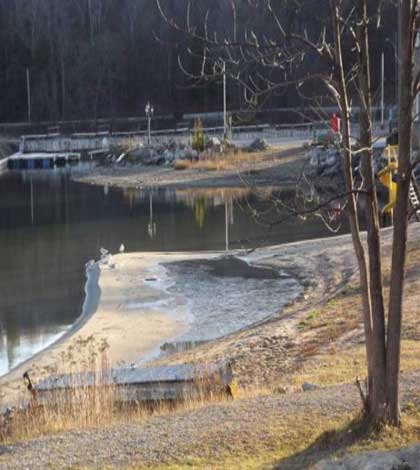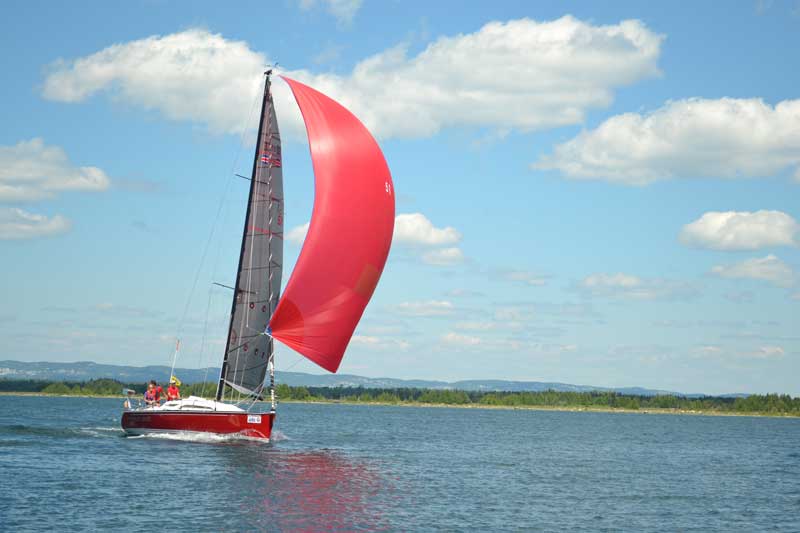MANITOULIN—Representatives of the Manitoulin Area Stewardship Council (MASC) and For Love Of Water (FLOW) have raised serious concerns with the news that the Canadian-based company Enbridge is prepared to put in place an expansion project across the Straits of Mackinac—a pipeline expansion project that will transport tar sands oil directly through the heart of the Great Lakes.
“This is frightening and I’m so glad MASC is a member of FLOW and hope they can do something about this,” said Therese Trainor, secretary of MASC, on Monday. “With these new threats it is that more important that the citizens of the Great Lakes have a voice and the Stop the Drop campaign is the best way to do this.”
Jim Nies, a member of MASC and FLOW, attended a rally for the Great Lakes on July 14 at the St. Ignace Bridge View Park, just north of the Mackinac River. “I agree with Elizabeth Kirkwood, executive director of FLOW, that this is a time bomb.”
“The pipeline is under Mackinac, and the stuff they are pumping is like asphalt that is being diluted with benzene. And they are planning to increase the flows by 50,000 gallons a day, which is a dramatic increase in flow,” said Mr. Nies.
In a blog to Ms. Trainor, Ms. Kirkwood, under the headline ‘The greatest threat to the Great Lakes and no one seems to know about it,’ states, “how often do you hear a story in the news and then feel utterly shocked that you didn’t know anything about it? Well, that’s how all 40 million of us living in the Great Lakes should feel about the Enbridge Line 5 expansion across the Straits of Mackinac. In a nutshell, this just may be the greatest threat facing the Great Lakes at this time in history. An oil spill in the Straits of Mackinac isn’t a question of if—it’s a question of when, according to the National Wildlife Federation’s (NWF) comprehensive report on this issue, ‘Sunken Hazard’.”
An oil spill the size of Exxon-Valdez would mean the end of the fisheries, aquatic food links and wildlife, she says. “Goodbye municipal drinking water, goodbye Mackinac Island, goodbye tourism and property values, and goodbye to one of the world’s largest freshwater inland seas,” wrote Ms. Kirkwood.
Ms. Kirkwood pointed out that Enbridge is the same Canadian company responsible in 2010 for a million gallon tar sands oil pipeline rupture and a $1 billion cleanup along a 35-mile stretch of Michigan’s Kalamazoo River. “Known as the largest transporter of crude oil, Enbridge is requesting a permit from the State Department’s US Transportation Department’s Pipeline and Hazardous Materials Safety Administration to expand its existing pipeline, Line 67, also known as the Alberta Clipper, to transport heavy tar sands oil originating from Alberta, Canada to Superior, Wisconsin,” said Ms. Kirkwood. “From there, Enbridge, according to company officials, has already expanded the volume of tar sands oil in a second pipeline, Line 5, that travels directly through the Straits of Mackinac to a refinery located in Sarnia, Ontario. This 1,000 plus mile pipeline route will double the tar sands oil that it currently carries and will deliver even more tar sands oil than the highly publicized and controversial TransCanada Corp’s Keystone XL pipeline.”
Ms. Kirkwood told the Recorder that, built 60 years ago in 1953, Line 5’s twin pipelines that cross the Straits of Mackinac—each 20 inches in diameter—were designed to transport light conventional crude oil, not Enbridge’s viscous, heavy tar sands oil or “bitumen” blended or diluted with volatile natural gas liquid condensate, also known as “dilbit.” Dilbit spills are particularly difficult to remediate because the bitumen and diluents separate, releasing toxic volatile organic compounds (VOCs) and heavy, sticky bitumen material. “And in Lake Michigan, who knows how long it would take to actually clean up these pollutants. The National Oceanic and Atmospheric Administration (NOAA) estimates that it takes an average of 99 years to get rid of pollutants in Lake Michigan.”
According to NWF, “Enbridge’s pipelines had more than 800 spills in the US and Canada between 1999 and 2010, leaking 6.8 million gallons of oil,” said Ms. Kirkwood. “So, with the combination of strong currents along the straits, Enbridge’s weak emergency response, and a strong likelihood of mechanical pipeline failure in this fragile ecosystem, we just ask ourselves: is this a risk we as citizens, inheritors, and future protectors of the Great Lakes are willing to accept?”
This proposed action is a clear violation of the public trust as the pipeline threatens to destroy the Great Lakes common waters, which support the region’s $62 billion economy with 1.5 million jobs, drinking water for 40 million citizens, as well as our very social fabric, quality of life and enjoyment, and shared ecosystem with wildlife. The unprecedented scale of such an ecological and economic disaster also would undermine the $1 billion already invested in the US government’s Great Lakes Restoration Initiative. This is why the public trust and the protection of the commons is more important than ever, said Ms. Kirkwood.
Mr. Nies said, “It is just a matter of time before the line ruptures.” He pointed out Enbridge is a Canadian company, with a head office in Edmonton. “They were responsible for the terrible spill at the Kalamazoo River in 2010, when over 877,000 gallons of heavy tar sands oil spilled into the river. And because they didn’t respond to the emergency quickly, for 18 hours it continued to spew oil and do damage and cost about $700 million in clean up costs. But you can’t compensate for the mess that is made, and it destroyed people’s lives not to mention the wildlife.”
“I don’t know how or any way this pipeline can be shut down,” said Mr. Nies. “But there needs to be an alternative found. Ultimately, all of this needs to be phased out. But the oil industry is a powerful vehicle, and it is hard to get politicians involved.”
“It is an incredibly shocking situation,” Ms. Kirkwood told the Recorder. “Considering the spill in Kalamazoo in 2010 which was a 35 mile stretch and is still not totally cleaned up, what happens if a spill happens in Mackinac? And this is an aging 60 year old pipeline through the Straits of Michigan, about 120 feet below the surface of the water and, incredibly, is not supported.”
“Cleaning up a heavy tar sands oil spill could be devastating to the Great Lakes,” said Ms. Kirkwood. “They insist the pipelines are safe, but are they? What have we learned from their past spills?”
For those who might say this potential rupture of the line might not have affects on Manitoulin Island, Mr. Nies said, “you know the Straits of Mackinac are not very far away. Meldrum Bay is 100 miles from the pipeline and this water can drift. And the water is all the same, it would be selfish to say this is someone else’s problem, it is all the same water.”
Ms. Trainor noted, “We have 20 percent of the world’s freshwater but what are the Canadian and US governments doing to make sure this is safe? This is imperative.”





